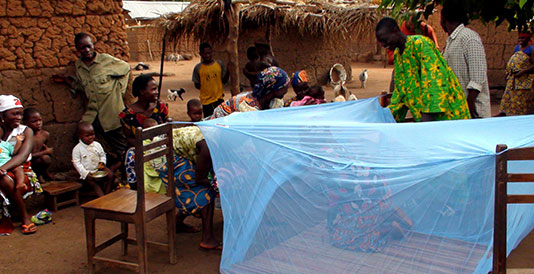 November 24, 2015 - A larger portion of Africa is currently at high risk for malaria transmission than previously predicted, according to a new University of Florida mapping study. Under future climate regimes, the area where the disease can be transmitted most easily will shrink, but the total transmission zone will expand and move into new territory, according to the study, which appears in the current issue of the journal Vector-Borne and Zoonotic Diseases. By 2080, the study shows, the year-round, highest-risk transmission zone will move from coastal West Africa, east to the Albertine Rift, between the Democratic Republic of Congo and Uganda. The area suitable for seasonal, lower-risk transmission will shift north into coastal sub-Saharan Africa. Most striking, some parts of Africa will become too hot for malaria. The overall expansion of malaria-vulnerable areas will challenge management of the deadly disease, said lead author Sadie Ryan, an assistant professor of geography at the University of Florida who also is affiliated with UF’s Emerging Pathogens Institute.
November 24, 2015 - A larger portion of Africa is currently at high risk for malaria transmission than previously predicted, according to a new University of Florida mapping study. Under future climate regimes, the area where the disease can be transmitted most easily will shrink, but the total transmission zone will expand and move into new territory, according to the study, which appears in the current issue of the journal Vector-Borne and Zoonotic Diseases. By 2080, the study shows, the year-round, highest-risk transmission zone will move from coastal West Africa, east to the Albertine Rift, between the Democratic Republic of Congo and Uganda. The area suitable for seasonal, lower-risk transmission will shift north into coastal sub-Saharan Africa. Most striking, some parts of Africa will become too hot for malaria. The overall expansion of malaria-vulnerable areas will challenge management of the deadly disease, said lead author Sadie Ryan, an assistant professor of geography at the University of Florida who also is affiliated with UF’s Emerging Pathogens Institute.UF News Release
Vector-Borne and Zoonotic Diseases Journal Article













